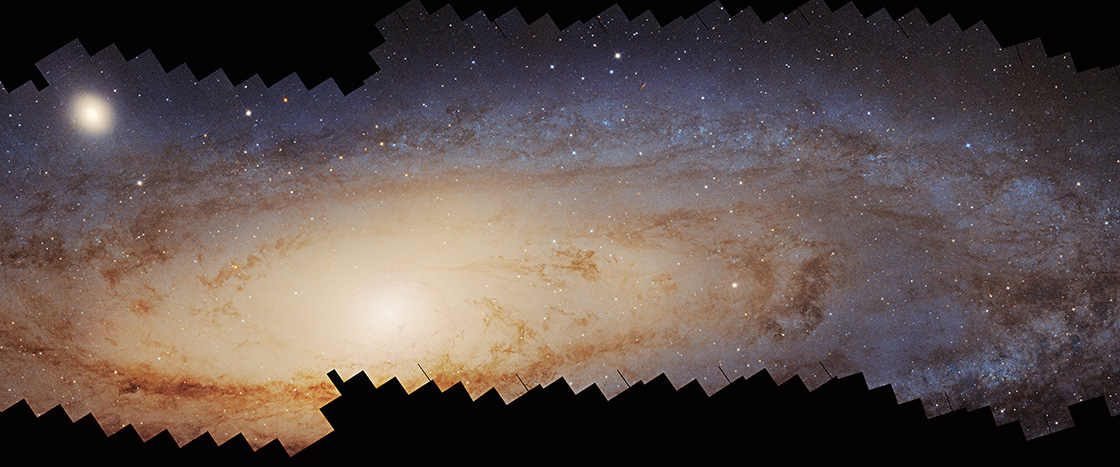This special image captures Andromeda (an-DRAH-muh-duh), the galaxy nearest to our own. A galaxy is a massive collection of stars held together by gravity. The universe is made up of trillions of them. NASA released this pic of our neighbor in January 2025, setting the stage for brand-new scientific discoveries!

Say Cheese, Andromeda!
Check out this amazing image of our galactic neighbor
Standards
Image Processing: Joseph DePasquale (STScI) (Andromeda)
This image is made up of 600 individual photos. NASA researchers put them together like a puzzle to create the big picture above.
This is M32, a much smaller galaxy that orbits, or travels in a path around, the Andromeda galaxy.
Andromeda is similar in shape to our own galaxy, the Milky Way. By studying it, scientists can learn more about the Milky Way, such as how it formed.
Scientists have been able to count 2 million stars in this image! But Hubble could only detect the brightest ones. In total, Andromeda is made up of a breathtaking number of stars—1 trillion!
Andromeda is the farthest object in our universe that you can see with just your eyes! On very dark nights, it appears as a bright, dense cluster of stars in the northern sky.
Andromeda is about 2.5 million light-years away from Earth. That means it would take you 2.5 million years to reach it if you traveled at the speed of light—671,000,000 miles per hour (1,079,000,000 km/h).
Meet Hubble!
NASA
These photos were taken by a giant, powerful space telescope called Hubble. It orbits Earth, taking pictures of space. It’s so high up, its view isn’t blocked by the layer of gases that surround Earth, called the atmosphere.
Hubble takes black-and-white images. Scientists added the color. They chose shades of blue and yellow to represent the different kinds of light Hubble detected.
